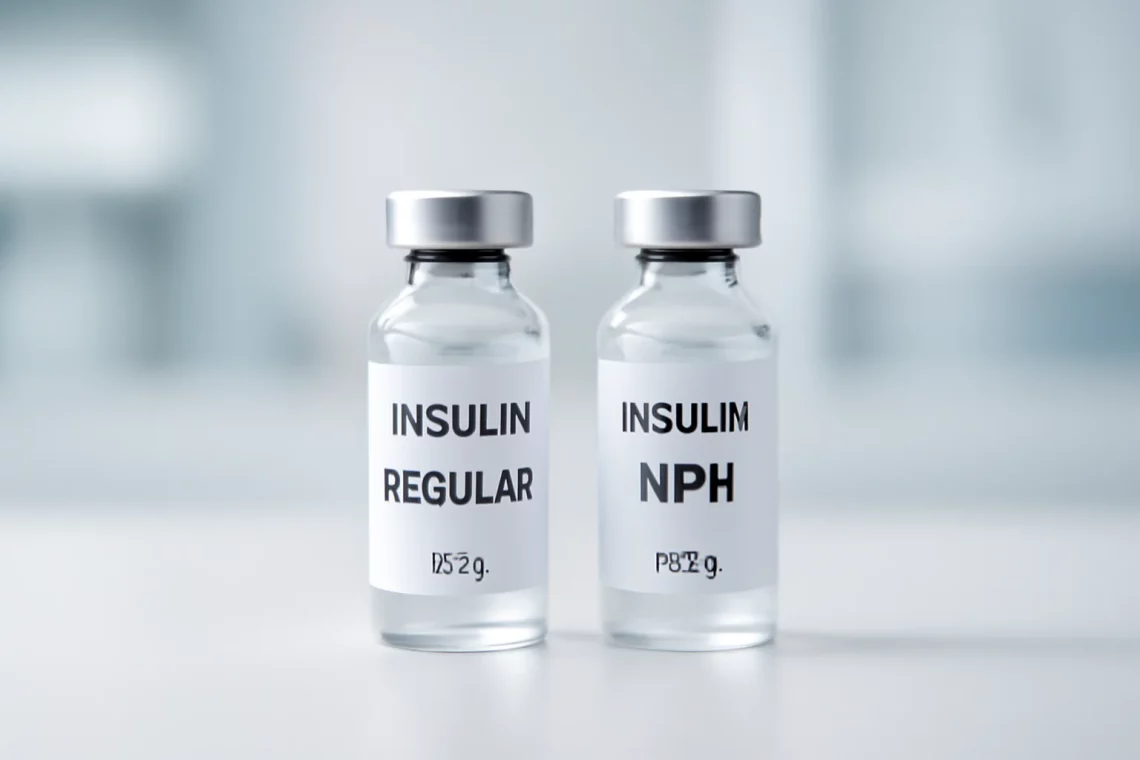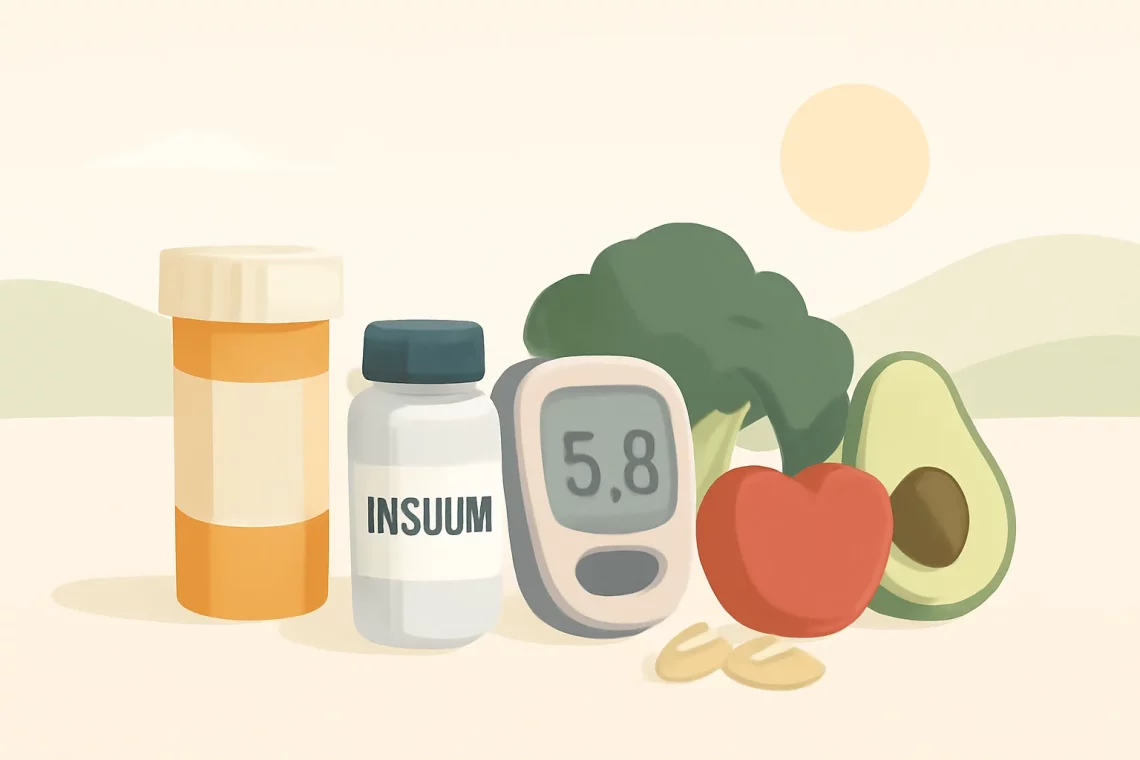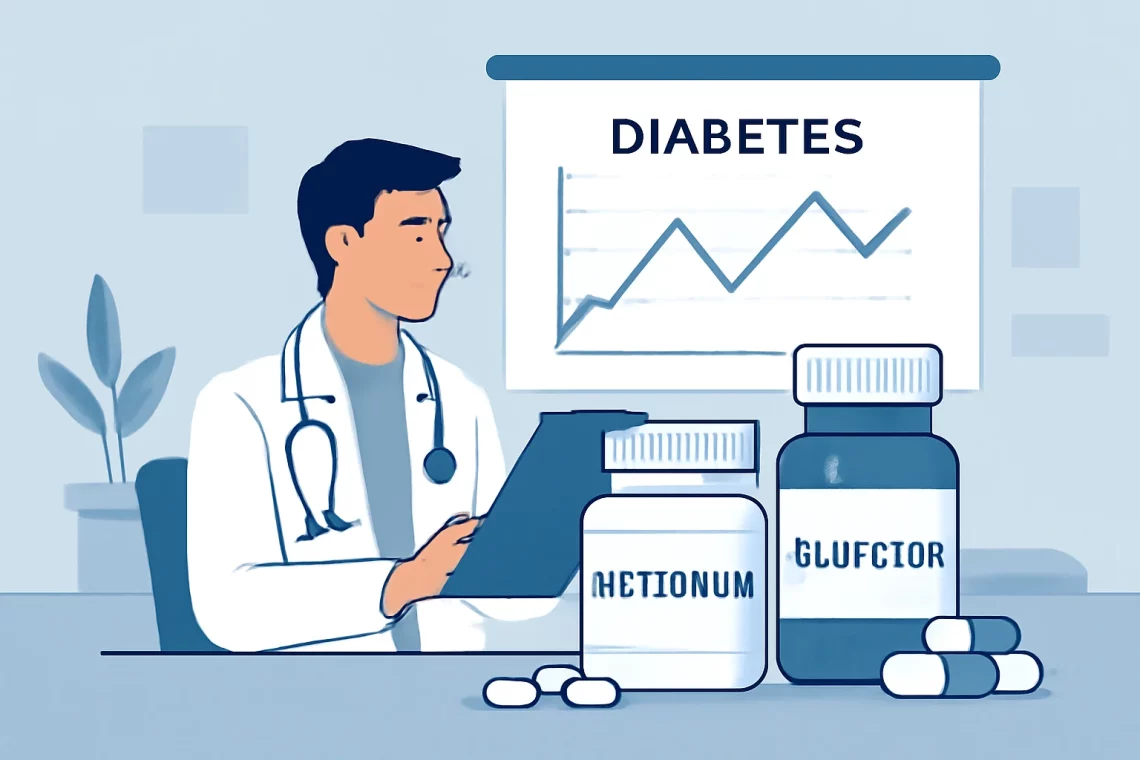-
Choosing Between Regular Insulin and NPH Insulin for Diabetes Management
Insulin therapy plays a crucial role in managing diabetes, a condition that affects millions worldwide. Among the various types of insulin available, Regular insulin and NPH (Neutral Protamine Hagedorn) insulin are two of the most commonly used. Understanding the differences between these two types of insulin can empower patients and caregivers to make informed decisions about diabetes management. Regular insulin, often referred to as short-acting insulin, is known for its quick onset of action. It’s typically used to control blood glucose levels around mealtimes, making it an essential component of many diabetes management plans. On the other hand, NPH insulin is an intermediate-acting insulin that provides a more prolonged effect,…
-
Zepbound vs Mounjaro: A Comprehensive Comparison of Two Treatments
The world of pharmaceuticals is continuously evolving, presenting new solutions to longstanding medical challenges. Among the many innovations, two medications have gained attention for their roles in managing weight and metabolic disorders: Zepbound and Mounjaro. Both are designed to assist individuals struggling with obesity and related conditions, which have become significant health concerns globally. While they share some similarities, they also exhibit distinct differences that could influence their effectiveness and suitability for various patients. As the prevalence of obesity rises, so does the demand for effective treatment options. Traditional weight loss methods often fall short, leading to the exploration of pharmaceutical alternatives. Zepbound and Mounjaro are part of a new…
-
Insulin Detemir vs Insulin Glargine: Which is Right for You?
Insulin therapy has become a cornerstone in the management of diabetes, providing patients with the means to control their blood glucose levels effectively. Among the various insulin formulations available, Insulin Detemir and Insulin Glargine are two popular long-acting insulins that play a crucial role in the treatment of diabetes. Both of these insulins are designed to mimic the body’s natural insulin release, allowing for better glycemic control and minimizing the risk of complications associated with diabetes. Understanding the differences and similarities between these two insulins can empower patients and healthcare providers alike to make informed decisions about diabetes management. With the increasing prevalence of diabetes worldwide, the choice of insulin…
-
Lantus vs Toujeo: Which Insulin is Right for You?
Managing diabetes effectively involves understanding the various insulin options available to patients. Among the most commonly prescribed long-acting insulins are Lantus and Toujeo, both of which are designed to help individuals maintain optimal blood sugar levels throughout the day and night. These two medications, while similar in their fundamental purpose, have distinct characteristics that may influence a patient’s choice depending on their specific needs, lifestyle, and diabetes management goals. Lantus, also known as insulin glargine, has been a staple in diabetes care for many years, providing patients with a reliable option for managing their condition. On the other hand, Toujeo, which is a more concentrated formulation of insulin glargine, offers…
-
Invokana vs Jardiance: Choosing the Right Diabetes Medication for You
When it comes to managing type 2 diabetes, patients often find themselves navigating a myriad of medication options. Two of the most commonly prescribed medications are Invokana and Jardiance, both of which belong to a class of drugs known as SGLT2 inhibitors. These medications work by preventing the reabsorption of glucose in the kidneys, leading to increased glucose excretion through urine. As diabetes management becomes increasingly personalized, understanding the differences, benefits, and potential side effects of each medication can empower patients in their treatment decisions. With a focus on improving glycemic control and reducing cardiovascular risks, both Invokana and Jardiance have garnered significant attention in the medical community. However, the…
-
Farxiga vs Tradjenta: A Comprehensive Comparison for Diabetes Management
In the world of diabetes management, the choice of medication can significantly impact a patient’s quality of life. With the rise of diabetes prevalence globally, various medications have emerged to help individuals manage their blood sugar levels effectively. Among these, Farxiga and Tradjenta are two commonly prescribed medications that serve distinct purposes in diabetes treatment. Understanding the differences and similarities between these two drugs can empower patients and healthcare providers to make informed decisions tailored to individual needs. Farxiga, known generically as dapagliflozin, is part of a class of medications called SGLT2 inhibitors. It works by preventing the reabsorption of glucose in the kidneys, allowing excess sugar to be excreted…
-
Insulin Aspart vs Insulin Lispro: Which One Is Right for You?
Insulin therapy is a cornerstone in the management of diabetes, particularly for individuals with type 1 diabetes and those with advanced type 2 diabetes. Among the various forms of insulin available, rapid-acting insulins such as Insulin Aspart and Insulin Lispro are widely used due to their ability to mimic the body’s natural insulin response to meals. Both types of insulin are designed to provide quick control over blood sugar levels during and after eating, making them essential tools for diabetes management. Understanding the differences and similarities between Insulin Aspart and Insulin Lispro can help patients and healthcare providers make informed decisions regarding insulin therapy. These two insulins are often compared…
-
Metformin vs Glipizide: Which is Better for Managing Diabetes?
Metformin and Glipizide are two widely used medications in the management of type 2 diabetes. As the prevalence of diabetes continues to rise globally, understanding the differences, benefits, and potential drawbacks of these medications is essential for patients, caregivers, and healthcare professionals alike. Both drugs function through distinct mechanisms to help control blood sugar levels, but their applications, efficacy, side effects, and patient experiences can vary significantly. Metformin, often viewed as a first-line treatment, works primarily by decreasing glucose production in the liver and increasing insulin sensitivity in muscle tissues. On the other hand, Glipizide belongs to a class of drugs known as sulfonylureas, which stimulate the pancreas to release…
-
Insulin Lispro vs Insulin Glulisine: Which is Right for You?
Insulin is a crucial hormone produced by the pancreas that plays a significant role in regulating blood sugar levels. For individuals with diabetes, maintaining optimal insulin levels is essential for overall health and well-being. Among the various types of insulin available, rapid-acting insulins such as Insulin Lispro and Insulin Glulisine are commonly prescribed to help manage blood sugar spikes after meals. These insulins are designed to act quickly, allowing for more flexible meal planning and improved glycemic control. The importance of understanding the differences between these two insulins cannot be overstated. Both Insulin Lispro and Insulin Glulisine have unique properties that can influence their effectiveness, duration of action, and the…
-
Pendulum Glucose Control: Revolutionizing Diabetes Management Solutions
In recent years, the landscape of diabetes management has undergone a significant transformation, driven by technological advancements and a deeper understanding of glucose regulation. As more people are diagnosed with diabetes, the need for effective management solutions has become increasingly urgent. Traditional methods of monitoring blood sugar levels often involve cumbersome routines, which can lead to non-compliance and poor health outcomes. This is where innovative approaches, such as pendulum glucose control, come into play. Pendulum glucose control refers to a dynamic method of managing blood glucose levels through continuous monitoring and adaptive adjustments. By utilizing real-time data, this approach aims to maintain glucose levels within a target range, reducing the…






































